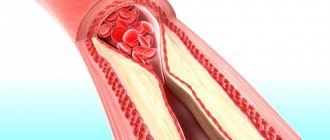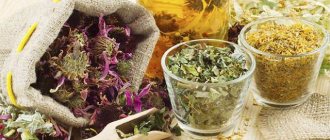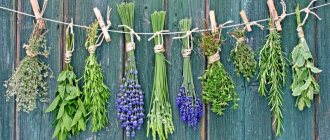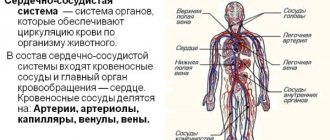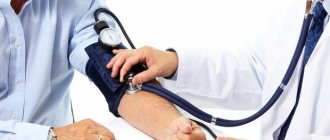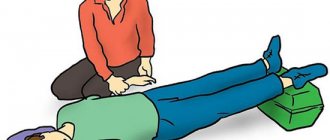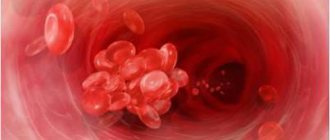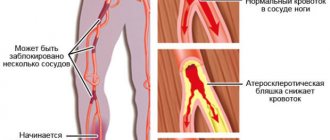Changes in blood vessels during atherosclerosis
With atherosclerosis of blood vessels, their lumen decreases. This narrowing is due to the deposition of cholesterol in the inner wall. Subsequently, a plaque forms, which can increase in size. When its capsule is torn, thrombosis develops on the plaque. As a result, the vessel may close completely, or a blood clot, breaking away from the plaque, may clog a vessel of a smaller diameter. All this leads to hypoxia, and with complete closure of the vessel, to necrosis of the blood supply to the organ. The result is the development of a heart attack, stroke, gangrene of the limb or the formation of an aortic aneurysm.
The clinical symptoms of vascular atherosclerosis will depend on which arteries are predominantly affected, as well as on the degree of their narrowing. These issues are given special attention in other articles. We will focus on prevention and tell you how to treat vascular atherosclerosis.
How the disease develops
Atherosclerosis of the vessels of the lower extremities begins with the deposition of excess cholesterol inside the vessels. Over time, deposits oxidize and an immune reaction occurs. The walls of the blood vessels become inflamed and thicken. Next, plaque growth begins, accompanied by a narrowed lumen of the arteries and a slowdown in blood flow. Due to these changes, blood clots settle on cholesterol plaques, forming dense blood clots.
Atherosclerosis of the vessels of the lower extremities
How to treat and prevent the progression of atherosclerosis
So, is it possible to cure atherosclerosis? Unfortunately, the answer is no. However, medicine can prevent its progression and stop the process at one level. And folk remedies, especially for preventive purposes, give positive results.
Diet and regimen
- exclude the consumption of foods rich in animal fats (butter, egg yolk, fatty meat);
- add vegetable oils and fiber-rich foods to your diet;
- eat foods that help remove cholesterol from the body (cabbage, radish, cottage cheese);
- dosed aerobic physical activity (running, swimming, walking);
- fight against excess weight;
- constant control over blood pressure and blood sugar;
- categorical cessation of smoking;
- correct daily routine with adequate sleep.
It is clear that in the modern rhythm of life it is difficult to adhere to such rules, but one should adhere to the above rules as much as possible, especially with cerebral atherosclerosis.
Drug treatment
Statins (simvastatin, lovastatin, fluvastatin) are drugs in this group that are among the most effective at the moment. Long-term use reduces cholesterol levels to normal levels. Prevents the formation of cholesterol in liver cells. When taking statins, it is necessary to monitor liver function using biochemical blood parameters (ALAT, ASAT).
A drug based on fish oil (eikonol), legume fiber (guarem), bile acid sequestrants (colestid, colestipol) are also used in the treatment of vascular atherosclerosis.
In the complex treatment of cerebral atherosclerosis, drugs that protect the brain from hypoxia and improve cerebral circulation (vinpocetine, fesam) are indicated. In patients suffering from atherosclerotic lesions of the heart vessels and atherosclerosis of the aorta, drugs that improve coronary blood flow (nitrates) are used. Symptoms of angina pectoris, which are likely to occur in such patients, are also treated. They use drugs that slow the heart rate and lower blood pressure.
These drugs include cardiomagnyl (aspirin). For existing stenosis of cerebral and coronary vessels, it is used continuously. For special indications, other drugs that affect the blood coagulation system (warfarin, xarelto) are also prescribed.
Endovascular surgery
Surgical treatment of stenosis by placing a special spring, called a stent, in a place affected by atherosclerosis in the vessel.
This surgical intervention is minimally invasive. The method is used to eliminate stenoses of both coronary arteries, cerebral vessels, and vessels of the kidneys and lower extremities. All work is performed through a small puncture in the groin area. Aortic aneurysms are also treated with special large stents.
Traditional methods of treatment
You can protect yourself from the development of atherosclerosis using folk remedies.
Since ancient times, recipes for garlic and radish, which have unique properties, have been preserved. Honey, potato juice and, most interestingly, alcohol also help well in the fight against atherosclerosis. But we are talking only about dry red wine in very small quantities. All of the above products contain substances that can remove cholesterol from the blood, thereby preventing the development of atherosclerosis. For cerebral atherosclerosis, lemon balm tea helps to avoid symptoms associated with vasoconstriction. All these methods are good for prevention for healthy people.
Read also: Atherosclerosis of the aorta of the lower extremities
If there is already systemic atherosclerosis that has affected the vessels of the brain, heart, kidneys and lower extremities, treatment only under the strict supervision of a doctor.
Thus, systemic atherosclerosis is a very dangerous disease, leading to the most common conditions leading to disability and death. And although hereditary factors play a large role in its appearance, its development can be prevented. The main thing is proper systematic treatment under the constant supervision of a doctor.
Other alternative medicine methods
In addition to treatment with the help of folk remedies prepared on the basis of medicinal plants, alternative medicine offers many more remedies for the treatment of blood vessels. Effective folk remedies for reducing serum cholesterol and treating atherosclerosis and preventing the formation of plaques in blood vessels are propolis tincture, as well as a beekeeping product such as honey. Vessels can be cleaned with baking soda and honey. This mixture is taken orally, one teaspoon daily, with water. The course of treatment is one month.
Juice therapy
Recently, such a method of non-traditional treatment of atherosclerosis as juice therapy is gaining increasing popularity. To prepare medicinal juices, folk experts recommend using products that are a natural storehouse of folic acid, pectin, potassium, and choline. It is these substances that have a beneficial effect on the condition of the vascular walls.
To prevent or slow down the progression of atherosclerosis of any localization, it is recommended to use the following products for preparing freshly squeezed natural juices:
- spinach;
- carrot;
- celery or parsley root;
- lemons;
- black and red currants;
- fresh cucumbers;
- beet;
- radish
In order for the treatment of atherosclerosis with juices to be not only tasty, but also effective, you must adhere to several rules. For juices, you should choose only fresh fruits, vegetables, berries, and herbs. You must drink the juice immediately after squeezing, otherwise most of the beneficial substances will disintegrate and the therapeutic effect will not be achieved.
Treatment with leeches
An effective remedy for atherosclerosis of the lower extremities, which is offered by alternative medicine, is hirudotherapy. Treatment with leeches has come to us since ancient times. The essence of the method is that along with the bite of these parasites, a lot of useful substances enter the bloodstream, which have a vasodilating and blood-thinning effect. This effect is indispensable for atherosclerosis of the arteries of the lower extremities, when their massive damage is observed.
Treatment with leeches should only be carried out by a specially trained person - a hirudotherapist. The treatment procedure usually lasts 15-25 minutes. The therapeutic effect develops within 5 minutes after the start of contact between the organisms of leeches and humans and lasts for about another day from the moment the procedure is stopped. To achieve the desired effect, the patient needs to undergo about 10 hirudotherapy sessions.
Compresses and oils
For the treatment of atherosclerosis localized in the arteries of the lower extremities, traditional medicine recommends the use of compresses and oils. To reduce pain and swelling in the legs, you can try making a compress from an infusion of medicinal herbs. The infusion is prepared from sage, string, plantain, and chamomile. Before applying a compress, it is necessary to properly stretch the affected limb. This is done to improve blood circulation in the superficial and deep layers of the skin.
Next, place a piece of gauze in the infusion of medicinal herbs, which is at body temperature. After it is sufficiently saturated with the medicine, it should be slightly squeezed and placed on the affected area, covering the top with cling film. It is advisable to wrap the limb with a blanket over it. To achieve a good effect, medicinal compresses are best applied in the morning and before bed. Maintain exposure for 20-30 minutes.
In addition to compresses, you can rub various oils into the affected limbs. Flaxseed, olive or cherry seed oil are suitable for this purpose. Before the procedure, you must thoroughly wash and dry the application area. The oil should be rubbed in with massage movements for at least 10 minutes. Then wrap the area where the oil is applied with a cotton cloth. It is recommended to perform this procedure at least twice a day.
Massage and exercise therapy
The essence of therapeutic massage and exercise is that both of these methods help improve blood circulation, which in turn increases the delivery of oxygen and nutrients to organs and tissues. Massage movements and physical activity significantly increase the tone of the striated muscles and have a strengthening effect on the vascular walls.
For therapeutic purposes, you can undergo massage sessions with a specialist or use self-massage techniques, after consulting with your doctor. Physical therapy classes are carried out under the supervision of an instructor. To achieve a therapeutic effect, the patient must undergo at least 10 massage sessions. Exercise therapy classes should be conducted at least three times a week with a gradual increase in load.
Wine
Adherents of traditional methods of treating atherosclerosis consider natural wine to be a powerful medicine. Is it so? It has been officially proven that the substances contained in dry wine made from grapes improve the rheological properties of blood and enhance the perfusion of organs and tissues. This beneficial effect from the intoxicating drink has a beneficial effect on patients with atherosclerosis.
For the treatment and prevention of arterial atherosclerosis, traditional healers recommend drinking a glass of natural dry wine and half a glass of water every day for two weeks. For this purpose, it is best to use homemade grape wine without adding alcohol. It is better not to drink industrially produced wine for medicinal purposes, as it contains ethyl alcohol and a lot of foreign chemical impurities.
Treatment and prevention of atherosclerosis
How to treat atherosclerosis and prevent its complications?
Since
atherosclerosis
is considered to be the main cause of the development of not only myocardial infarction, but also coronary heart disease, as well as cerebral stroke.
Both prevention and treatment of this pathology must be given extremely close attention. Modern methods of treatment and prevention of this disease are based, first of all, on eliminating risk factors that provoke the development of atherosclerosis. If you eliminate these types of factors, you can prevent the development of complications, and, consequently, save the patient’s life. Therapy for this disease is complex and involves a huge number of measures based on changes in diet, correction of the patient’s lifestyle, and giving up bad habits. In this case, you cannot do without medications that will help restore the normal metabolism of the human body.
Therapy of atherosclerosis. Is it possible to treat this pathology?
We have already said more than once that atherosclerosis is a kind of manifestation of the aging process of the human body. We also mentioned that this belief is only fifty percent true, since if you look from the other side, atherosclerosis is actually a separate disease that is quite possible to cure and prevent its development. In fact, atherosclerosis can be treated!
Numerous clinical studies have revealed that risk factors for this disease, such as a sedentary lifestyle, obesity, hypertension, smoking, contribute to an approximately twofold increase in the risk of not only atherosclerosis, but also its various complications. If we take into account the fact that one patient has several such factors at once, then the risk immediately increases fivefold. From all of the above, one conclusion can be drawn: the more risk factors for this disease are eliminated, the greater the chances of preventing the occurrence of both atherosclerosis and its complications.
Therapy of atherosclerosis. Main directions
Both prevention and therapy of this disease are based on several areas at once. This includes medicinal and non-medicinal treatment, surgical treatment, as well as therapy for concomitant pathologies.
Non-drug treatment
This method of therapy involves eliminating all risk factors for the development of this pathology, as well as changing the patient’s lifestyle. In this case, the fight is waged against risk factors that are subject to change:
Fighting obesity:
weight should always be maintained at a normal level, since only in this way will it be possible to prevent the development of pathologies such as:
coronary heart disease
, diabetes mellitus and
hypertension
;
Increasing physical activity:
makes it possible to reduce total body weight, restore heart function and blood circulation in this area, prevent the occurrence of
diabetes mellitus
and
hypertension
;
Proper nutrition
, reducing to a minimum foods with high amounts of cholesterol: a special diet consisting of a large number of foods enriched with unsaturated fatty acids and a low amount of animal fats, overeating is unacceptable;
Quitting alcoholic beverages and smoking:
basic methods for preventing the development of this disease. Both tobacco and alcoholic beverages tend to have a negative effect not only on the condition of blood vessels, but also on the functioning of the heart; Elimination of overwork and stressful situations: makes it possible to restore the functioning of both the endocrine and nervous systems. In addition, normal metabolism is restored.
In general, in order to prevent the development of this pathology or cure it, it is necessary to strictly follow a “certain” regimen, that is, follow all the rules of a healthy lifestyle. If the patient manages to get rid of one risk factor for this pathology, then he will reduce the risk of developing its complications by half. Getting rid of all factors is a direct path to the normal course of this disease without possible complications.
Read also: Case history of atherosclerosis of the lower extremities
Drug therapy for atherosclerosis
Treatment of this pathology with medications plays a very important role, since sometimes this is the only way to prevent the development of numerous complications. Right now, only the main groups of pharmaceuticals that can be used in the fight against this disease will be presented to the attention of readers. A specialist doctor will tell you which drugs are suitable for a particular patient during the consultation, since he is the one who knows the specifics of each specific case. Drug therapy for this disease involves, first of all, reducing the amount of cholesterol in the blood to a minimum, as well as restoring lipid metabolism in the body. This treatment method is used by doctors only when non-drug therapy does not produce any results. Today, therapy for this pathology is carried out using the following groups of medications:
Bile acid sequesters
This group of medications includes drugs called
Colestipol
and
Cholestyramine
. When exposed to the human body, they tend to interfere with the absorption of bile acids from the gastrointestinal tract. This helps reduce the amount of cholesterol in the blood. In addition, sequesters of bile acids prevent cholesterol from being absorbed from food. Since this type of medication is not typically absorbed into the blood, in most cases it is tolerated very well by patients. Possible side effects include: constipation, exacerbation of hemorrhoids, nausea, exacerbation of peptic ulcers, diarrhea. Contraindications are: excessive sensitivity to the components of the drugs, lactation and pregnancy, pathologies of the biliary tract.
Statins
The group of statins includes drugs called
Simvastatin
and
Lovastatin
. The mechanism of action of these pharmaceuticals is based on inhibiting the production of cholesterol in the cells of the body, and, consequently, reducing its level in the blood. In addition, these medications also tend to stabilize the atherosclerotic plaque and prevent the development of certain complications that arise against the background of its destruction.
Possible side effects include: diarrhea, sleep disturbances, headaches, nausea, itchy skin, dizziness, flatulence, constipation, and so on. If these drugs are taken strictly as prescribed by the doctor, then the risk of developing these side effects is minimal. Contraindications to the use of statins are: infectious pathologies, acute liver diseases, excessive sensitivity to components, injuries, endocrine diseases, pregnancy and lactation, surgical interventions.
Nicotinic acid and its derivatives
Nicotinic acid is also called vitamin
PP
.
By influencing the human body, vitamin PP
helps speed up the process of transformation of fats in the body, which in turn helps reduce their amount in the blood. Possible side effects include: itching of the skin, exacerbation of peptic ulcers, fever, formation of stones in the bile ducts, redness of the upper body and face, heart rhythm disturbances, increased blood glucose levels. Contraindications to the use of these drugs are considered to be: gout, severe forms of hypertension, excessive sensitivity to components, peptic ulcer, pregnancy and lactation. Drug treatment for this disease can only be started after consulting a doctor, who will prescribe it. Self-medication in this case is strictly contraindicated.
Fibrates
Fibrates include drugs such as
Ciprofibrate
,
Gemfibrozil
and
Fenofibrate
. The mechanism of their action involves accelerating the work of enzymes that promote the breakdown of blood fats, which helps reduce the amount of fats in the blood. The side effects that may occur with fibrates are the same as those with statins. It is extremely rare that anemia may develop in this case. Available contraindications include: renal failure, diseases of the gallbladder and liver, excessive sensitivity to components, as well as pregnancy and lactation.
Herbal infusions
Traditional medicine for atherosclerosis offers many preparations from medicinal plants. The use of several herbs at once has a complex effect. The most effective means are the following:
- Plantain, horsetail, yarrow, strawberry leaves, and hawthorn flowers are mixed in equal proportions. Fill it completely with water, place it in a water bath for 10-15 minutes, then allow it to cool and take 250 ml per day, divided into 3 doses.
- A mixture is made from equal quantities of hawthorn and rose hips, nettle leaves, sweet clover, raspberries and horse chestnut flowers. Separate a large spoonful of the mixture, brew it with a glass of boiling water, and leave for an hour and a half. Before taking, strain and consume all the liquid throughout the day.
- A collection is prepared from equal amounts of yarrow, dandelion root and wheatgrass, and cinquefoil leaves. Take a large spoon from it, pour in 25 ml of hot water, and leave for an hour. Drink half a glass daily.
How is cerebral atherosclerosis treated today: how to fight and overcome the disease?
Atherosclerosis is a serious pathology that, without proper treatment, leads to complications and, in some cases, death. In many cases, the disease is diagnosed at later stages. Against the background of atherosclerosis, patients often develop myocardial infarction and coronary heart disease. In the article we will tell you how modern medicine treats cerebral atherosclerosis.
Thick viscous blood is the most important prologue for atherosclerosis, strokes and heart attacks!
Thrombophlebitis, varicose veins, hemorrhoids, chronic fatigue, heart attack, stroke, high blood cholesterol, atherosclerosis, thick bile with the formation of stones... What do the above diseases have in common? The fact that the most important component of the mechanism of their development is Thick Blood against the background of a decrease in bioelectric potentials both in the blood and on the membranes of cells of tissues and organs!
To treat and prevent the occurrence of these diseases, it is necessary to thin the blood so that it circulates through the veins and tissues not like thick jelly, but freely. Without this, we can spend years trying to cleanse blood vessels, reduce cholesterol, etc., but we cannot get rid of the likelihood of these diseases and, first of all, atherosclerosis, stroke, heart attack... and numerous other chronic and incurable diseases.
Check out my consultation: “Thick Blood.”
How to deal with cerebral atherosclerosis
Atherosclerosis is a disease that must be combated as soon as it makes itself felt. Otherwise, this can lead to disastrous consequences. Therapy has its own characteristics depending on which vessels are affected.
This pathology is especially dangerous to human health. Treatment of cerebral atherosclerosis should be prescribed by a doctor. Self-medication and the use of traditional therapy recipes can only worsen the situation.
Traditional recipes can be combined with drug treatment, but only after consultation with a specialist.
The only thing the patient can do on his own is to adhere to a diet that excludes the consumption of fatty foods. But nutrition can affect a person’s condition only during the prevention of the disease and at its initial stage.
With cerebral atherosclerosis, patients must not only follow a diet, but also adhere to a regimen, give up bad habits, monitor blood pressure and not be nervous.
If drug treatment of cerebral atherosclerosis does not bring positive results, surgical intervention may be required. The indication for it is usually a narrowing of the lumen of the vessel by more than 50%.
What drugs treat blood vessels?
The following groups of drugs are used to combat cerebral atherosclerosis:
- Statins slow down cholesterol synthesis and reduce its concentration in the blood. The downside is that it has a negative effect on the liver. Examples of drugs are Rosuvastatin, Simvastatin, etc.
- Bile acid sequestrants (cholestyramine, cholestipol) – promote faster removal of bile acids from the body, and also stimulate their synthesis in the liver.
- Fibrates (Fenofibrate, Gemfibrozil) – promote the production of enzymes that break down fats found in the blood. This helps reduce cholesterol concentrations.
- Nicotinic acid – slows down the removal of acids from adipose tissue, stimulates the transformation of fats in the body, reduces their content in the blood. Dilates blood vessels, improving blood circulation.
Lack of ascorbic acid as one of the factors preparing blood vessels for atherosclerosis
Hidden forms of vitamin C deficiency also contribute to the development of atherosclerosis. Favorable conditions are created in the body for the development of this disease, since the vessels to a certain extent become prepared for atherosclerotic changes.
There is evidence that with age, the amount of vitamin C in the body decreases. However, the tissues of older people are less saturated with it compared to young people and require increased amounts of this vitamin. At the same time, excess nutrition in combination with vitamin C deficiency is a sure path to the early development of atherosclerosis. This disease is especially common in people who lead a sedentary lifestyle, accompanied by insufficient physical activity and low energy expenditure. Synthetic vitamin C is not suitable. The best sources of vitamin C are black currants, kiwis, oranges and many other berries. By the way, mice that were fed fatty foods and orange peels in the experiment did not gain excess weight, and also suffered less from heart and vascular diseases compared to animals from the control group that were not given orange peels.
How to stop the development of the disease at home?
In order to improve your well-being and slow down the further development of the disease, doctors advise adhering to the following recommendations:
- Give up bad habits.
- Do regular physical activity (You need to be careful here. Overexertion, on the contrary, can lead to deterioration in well-being).
- Watch your weight.
- Try to avoid anxiety and stress.
- Stick to your diet.
- Control your blood pressure and monitor your blood sugar levels.
- Keep your cholesterol under control.
- Follow your doctor's instructions.


